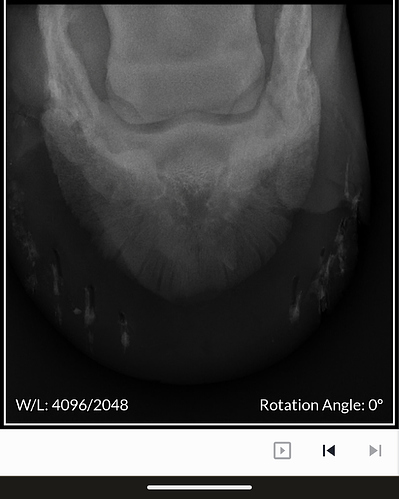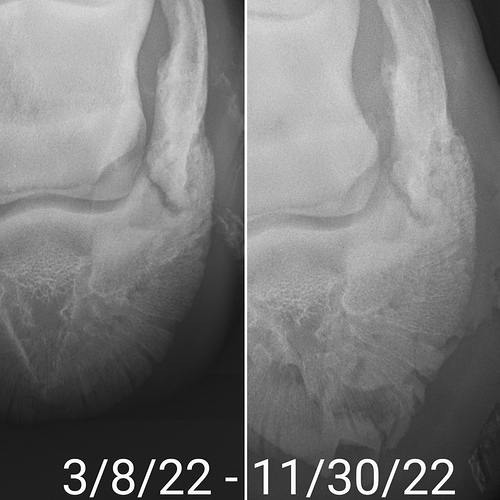Saturday afternoon, my mare was kicked by a pasture mate and ended up with a broken splint bone in the RH. The barn manager saw it as it happened and pulled her right away, called me, called the vet, etc. Mare was most definitely off on RH (she also had a laceration on LH fetlock, but that bothered her less). Rads were taken confirming the break and sent off to Nori Adams at Leesburg for the consult. In the meantime, sutures were placed in LH laceration, and both hinds were pressure-wrapped with no bows and gauze & vet wrap & elastikon around the cornet bands for the laceration and other cuts. Nori agreed with a cautiously optimistic assessment of no surgery but stall rest for 6-8 weeks with pressure wraps to keep swelling down and the bone stabilized. We are doing new rads in 2-3 weeks, around the same time as the sutures coming out. As of last night, when I rewrapped, the only significant swelling is in the RH hock and some puffiness (relative) in the cannon bone. She’s already due for Cooper Williams to come out this spring for new hock and SI rads and probably new hock injections (been two years) so we need to figure out timing for that now.
So right now, I feel okay - I think. Thanks to a pasture injury in January we also spent the start of the year on stall rest (mare is now banned from field board and will get small pasture turnout 12 hr day once released from stall rest), my horse costs this year now match last year… and last year I bought a horse and a saddle and showed twice as much. Mare is on bute and has a stall right by the tack room so is getting lots of attention so she feels okay.
So, for you all, after my trauma dump - what are your favorite, low-cal, low-sugar ways to keep a horse amused on stall rest? Favorite way to recover from a bone fracture? Favorite way to alter diet during stall rest? This spring, her coat looked fantastic coming out of stall rest, but she lost topline muscle that was a pain to rebuild (we have a passoa system, but we can’t use therabands because half I’m allergic to and half she’s allergic to). She has a savvy feeder hay box that she likes to toss around, and she can’t hoover hay up from, so that’s something to keep her occupied some of the time. I’m debating if we need Cooper out as she’s coming back into rehab or wait until she’s fit. I’m trying to keep both of us on a good track forward. What am I missing?


